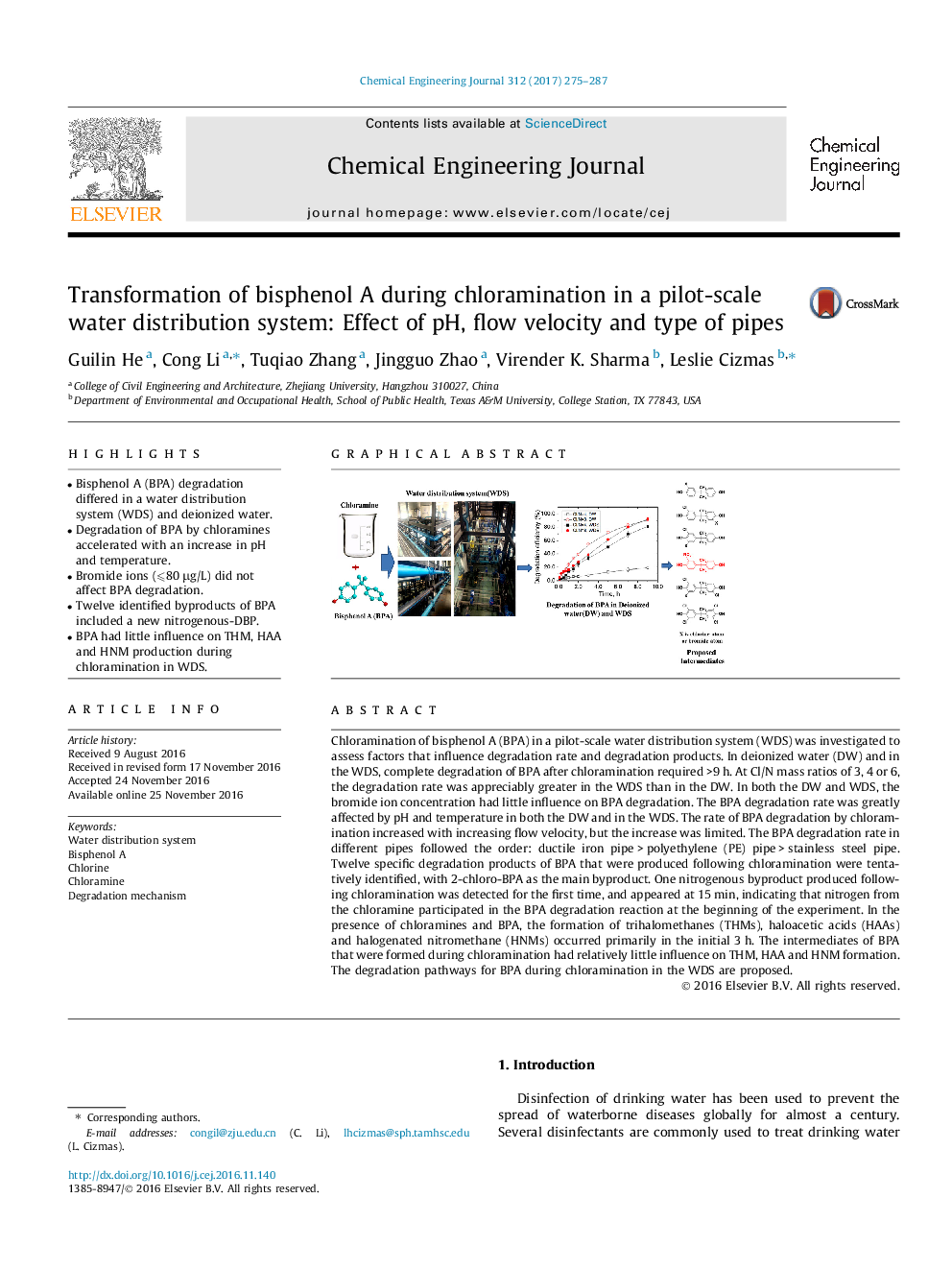| کد مقاله | کد نشریه | سال انتشار | مقاله انگلیسی | نسخه تمام متن |
|---|---|---|---|---|
| 6466471 | 1422966 | 2017 | 13 صفحه PDF | دانلود رایگان |

- Bisphenol A (BPA) degradation differed in a water distribution system (WDS) and deionized water.
- Degradation of BPA by chloramines accelerated with an increase in pH and temperature.
- Bromide ions (⩽80 μg/L) did not affect BPA degradation.
- Twelve identified byproducts of BPA included a new nitrogenous-DBP.
- BPA had little influence on THM, HAA and HNM production during chloramination in WDS.
Chloramination of bisphenol A (BPA) in a pilot-scale water distribution system (WDS) was investigated to assess factors that influence degradation rate and degradation products. In deionized water (DW) and in the WDS, complete degradation of BPA after chloramination required >9 h. At Cl/N mass ratios of 3, 4 or 6, the degradation rate was appreciably greater in the WDS than in the DW. In both the DW and WDS, the bromide ion concentration had little influence on BPA degradation. The BPA degradation rate was greatly affected by pH and temperature in both the DW and in the WDS. The rate of BPA degradation by chloramination increased with increasing flow velocity, but the increase was limited. The BPA degradation rate in different pipes followed the order: ductile iron pipe > polyethylene (PE) pipe > stainless steel pipe. Twelve specific degradation products of BPA that were produced following chloramination were tentatively identified, with 2-chloro-BPA as the main byproduct. One nitrogenous byproduct produced following chloramination was detected for the first time, and appeared at 15 min, indicating that nitrogen from the chloramine participated in the BPA degradation reaction at the beginning of the experiment. In the presence of chloramines and BPA, the formation of trihalomethanes (THMs), haloacetic acids (HAAs) and halogenated nitromethane (HNMs) occurred primarily in the initial 3 h. The intermediates of BPA that were formed during chloramination had relatively little influence on THM, HAA and HNM formation. The degradation pathways for BPA during chloramination in the WDS are proposed.
127
Journal: Chemical Engineering Journal - Volume 312, 15 March 2017, Pages 275-287